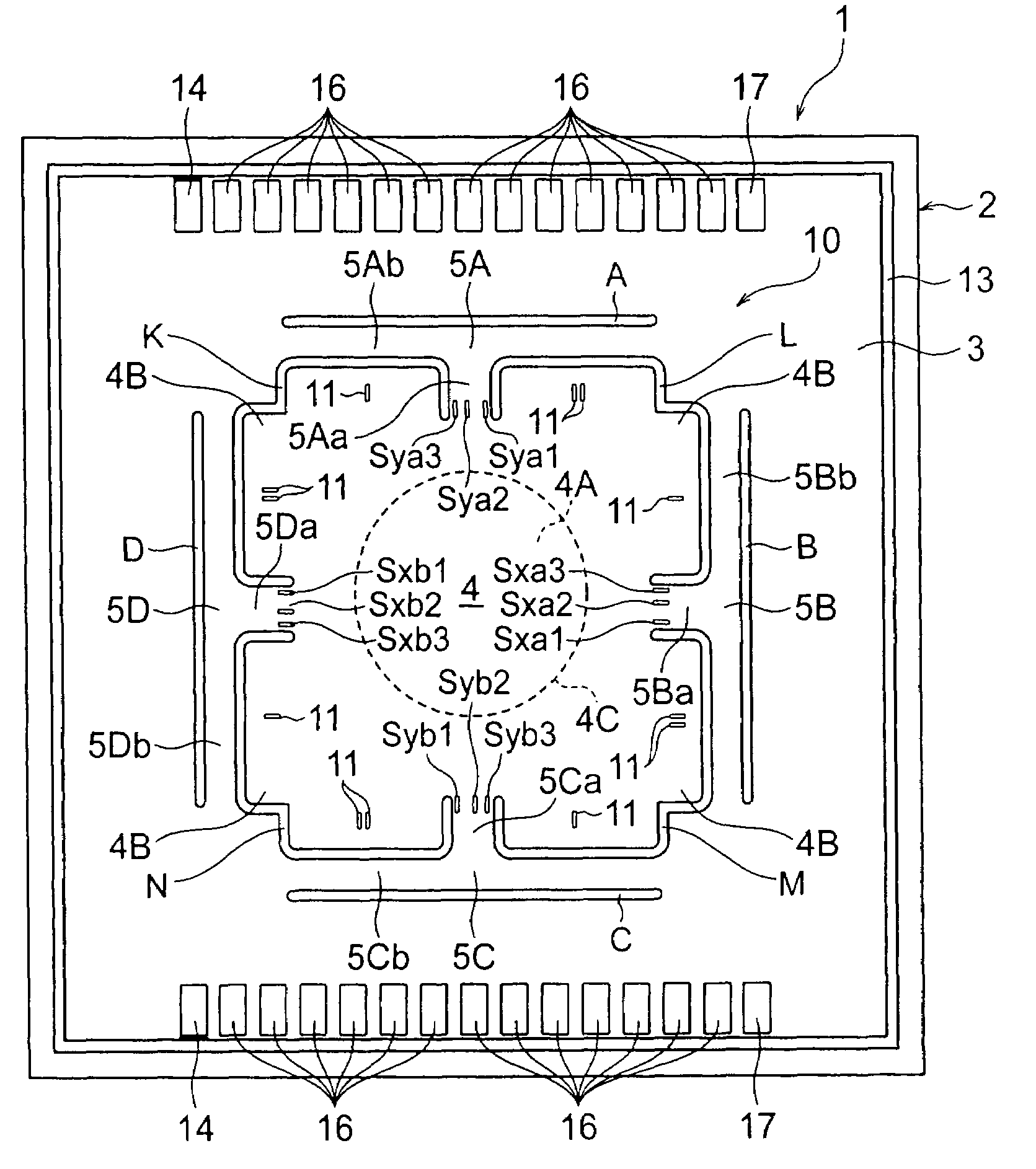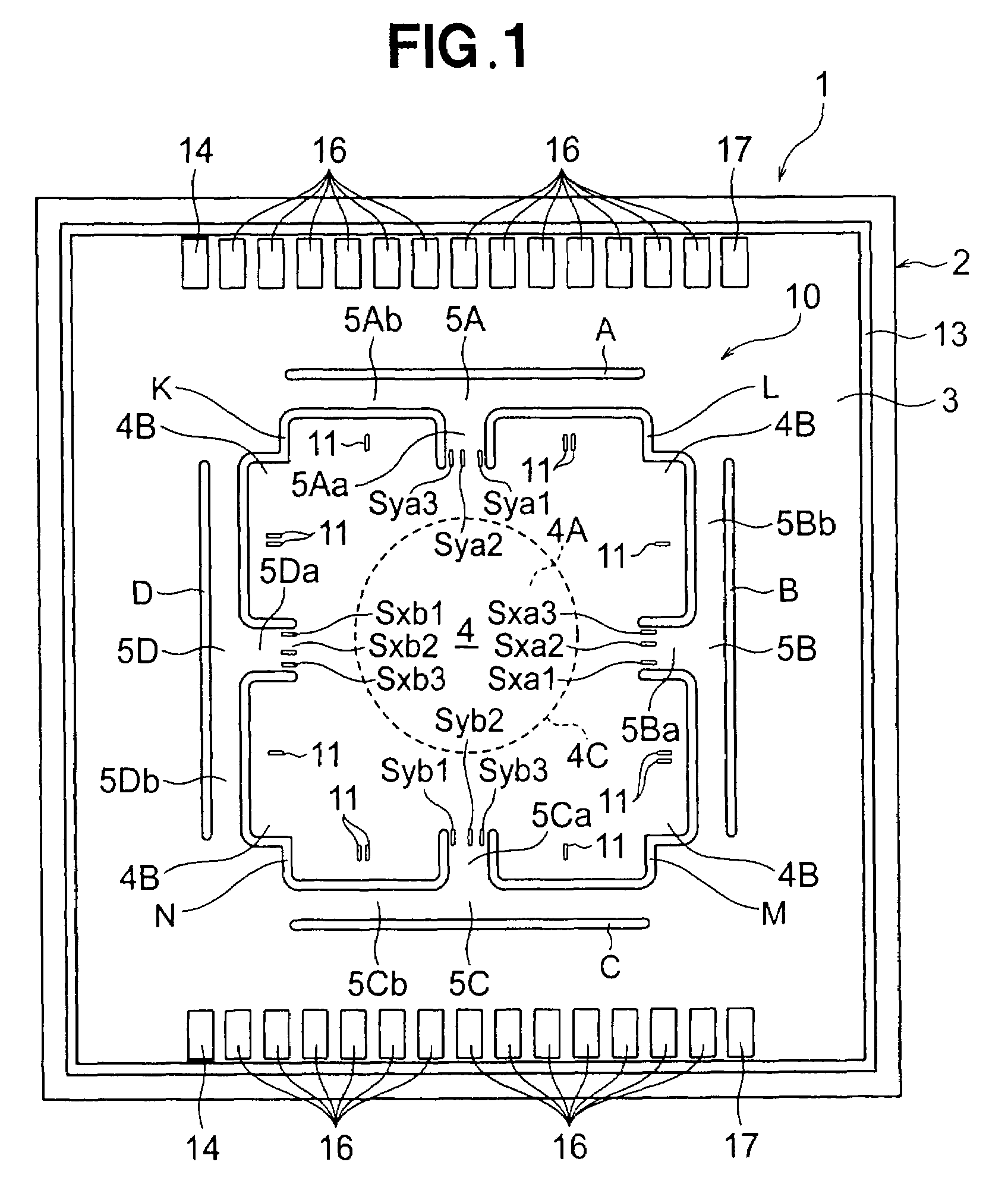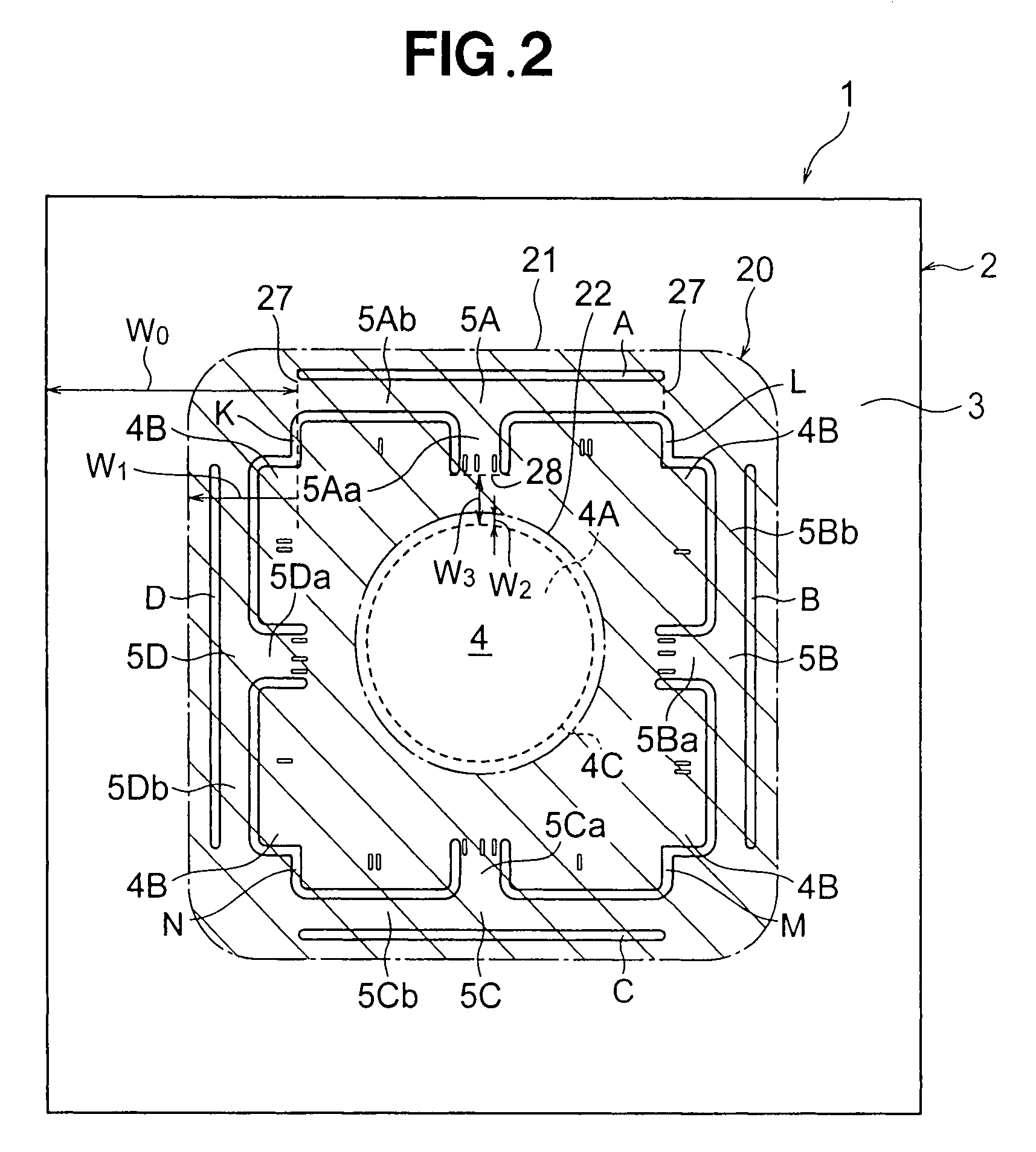Force sensor chip
a technology of force sensor and sensor chip, which is applied in the direction of force/torque/work measurement apparatus, instruments, tension measurement, etc., can solve the problems of inability to maintain detection balance, inability to describe the thickness reduction of semiconductor substrate, and inability to reduce the thickness of semiconductor substrate, etc., to achieve favorable detection balance, increase the degree of deformation of connecting parts, and compact
- Summary
- Abstract
- Description
- Claims
- Application Information
AI Technical Summary
Benefits of technology
Problems solved by technology
Method used
Image
Examples
first embodiment
[0035]the force sensor chip of the present invention will be described with reference to FIGS. 1 through 3. In this embodiment, an example of a six-axis force sensor chip is described as a force sensor chip. The force sensor chip of the present invention is not limited to a six-axis force sensor chip.
[0036]FIG. 1 is a plan view showing the front surface of the force sensor chip. In the force sensor chip of FIG. 1, all of the strain resistance elements and temperature compensation resistance elements show a pattern comprising a plurality of holes and electrode pads.
[0037]In FIG. 1, the six-axis force sensor chip 1 of the present embodiment is formed using a semiconductor substrate which preferably has a square planar shape. For example, the length of one side of this square semiconductor substrate is 5.5 mm. The substrate is not limited to a semiconductor substrate. The six-axis force sensor chip 1 has a plate-form shape based on the semiconductor substrate.
[0038]In the six-axis forc...
PUM
| Property | Measurement | Unit |
|---|---|---|
| length | aaaaa | aaaaa |
| diameter | aaaaa | aaaaa |
| areas | aaaaa | aaaaa |
Abstract
Description
Claims
Application Information
 Login to View More
Login to View More - R&D
- Intellectual Property
- Life Sciences
- Materials
- Tech Scout
- Unparalleled Data Quality
- Higher Quality Content
- 60% Fewer Hallucinations
Browse by: Latest US Patents, China's latest patents, Technical Efficacy Thesaurus, Application Domain, Technology Topic, Popular Technical Reports.
© 2025 PatSnap. All rights reserved.Legal|Privacy policy|Modern Slavery Act Transparency Statement|Sitemap|About US| Contact US: help@patsnap.com



